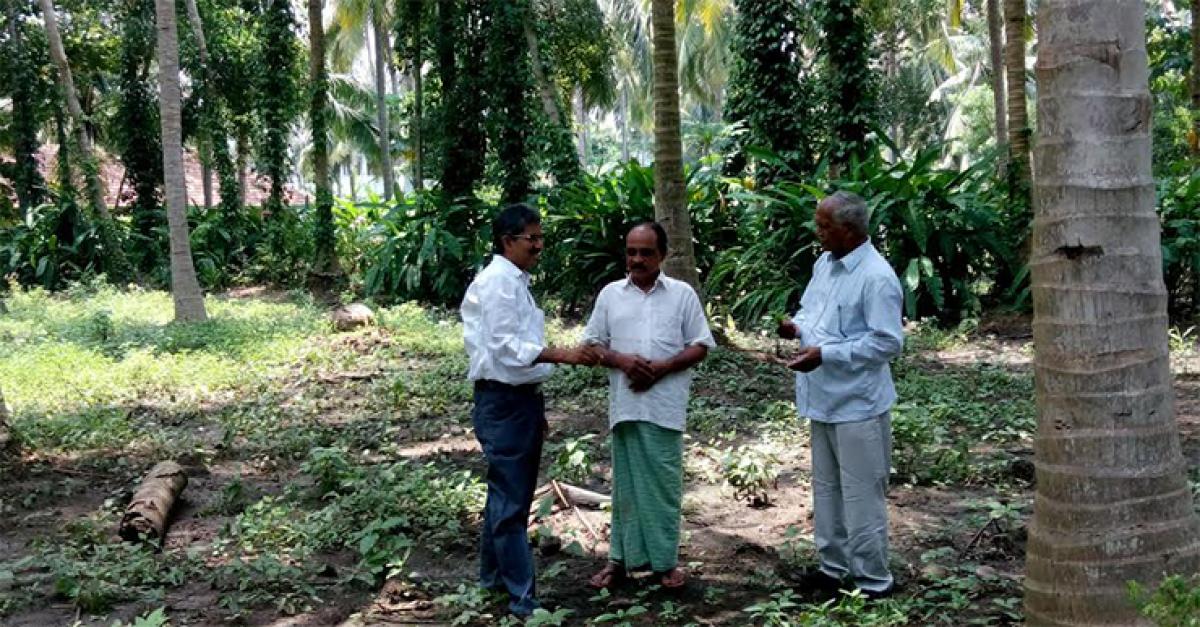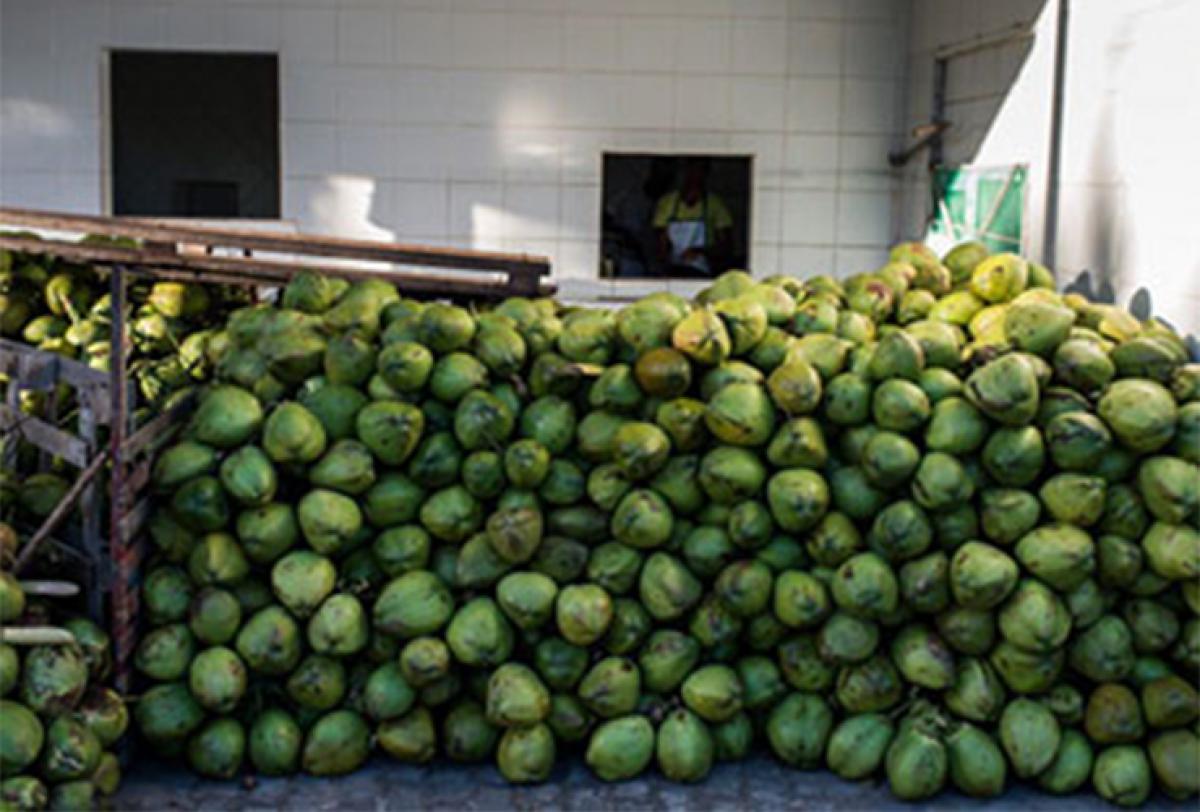Live
- South Korea's ruling party leader cancels press conference amid calls for resignation
- AIADMK's big meet discusses 2026 polls, prospective alliances
- BJP questions Congress-Shiv Sena (UBT) alliance over Aaditya Thackeray's Savarkar-Nehru remark
- Maha Oppn to boycott customary CM tea meet, cites rising farmers' distress, atrocities against Dalits
- Mikheil Kavelashvili is new Georgian President
- He makes things look easy: Smith on 241-run partnership with Head
- Decline in TB cases & deaths in India ‘remarkable’, shows ‘political commitment’, says former WHO Director
- PKL 11: Delhi dedicates win over Haryana to ‘junior express’
- Cyclone kills 14 in French territory Mayotte
- 3rd Test: Head, Smith centuries flatten India on Day 2
Just In

Andhra Pradesh is the fourth largest producer of coconuts after Kerala, Karnataka and Tamil Nadu. The twin Godavari districts account for the bulk of coconut and copra production in the State. East Godavari district shares 50 percent of coconut cultivation of Andhra Pradesh followed by West Godavari, Srikakulam and Visakhapatnam districts.
World coconut day today

Rajahmundry: Andhra Pradesh is the fourth largest producer of coconuts after Kerala, Karnataka and Tamil Nadu. The twin Godavari districts account for the bulk of coconut and copra production in the State. East Godavari district shares 50 percent of coconut cultivation of Andhra Pradesh followed by West Godavari, Srikakulam and Visakhapatnam districts.
Konaseema is the major player in coconut cultivation. High humidity, good rainfall with an average of 1100 mm and coastal alluvial soils of Konaseema are an added advantage for the cultivation of coconut. In Konaseema, farmers have great sentimental attachment towards coconut trees.
The farmers used to say that four coconut trees are equal to one son as the tree is useful in every manner with its nuts, stumps, leaves, water and coir providing a good livelihood for the family. But now slowly things are changing. Though coconut is being cultivated in 16 mandals of Konaseema, farmers are fed up with the coconut cultivation and are slowly withdrawing from it due to neglect shown by the successive governments over the last decade.
With no proper encouragement, the next generations of the coconut farmers are also looking for different options for survival. The cyclone in 2010 and 2011destroyed thousands of coconut trees in East Godavari, particularly in Konaseema, Yanam and Kotipalli areas. The red spot disease also added to their problems, according to Penumatsa Jagannadha Raju, a progressive coconut farmer from Mummdivaram in East Godavari.
A visit to Ambajipeta market yard in East Godavari district by The Hans India has brought to light certain shocking facts. Ambajipeta which was known as the second Calicut is now wearing deserted look. There were about 160 exporters this market yard till 2005. But now only a couple of exporters are in export business. No value added industries have come up in Konaseema region and the regional office of the Coconut Development Board is in Secunderabad which is now part of Telangana state.
With no regional office and with no encouragement from the government many coconut growers have shifted towards real estate business and aqua culture. The few farmers who are still growing coconuts are blaming the NREGS which had resulted in shortage of agriculture workers. They say that things will not improve unless the government links the scheme with the agriculture.
Even the number of those who climb coconut trees has been fast diminishing. According to Balarama Coconut Producers Federation chief Uppuganti Bhaskar Rao, unfavourable climatic conditions and untimely rains in the last five years have resulted in substantial losses in the yield.
Raw coconuts from Tamil Nadu and Kerala are finding their way into Andhra Pradesh and they are available at Rs 4,500 per thousand. This has also affected the local farmers who were selling best coconuts for Rs 10,000 per thousand nuts. However, Rao said still everything was not lost and if the government extends help, the coconut cultivation can be revived to its past glory.
As there is no help coming from anywhere, some coconut farmers have made a beginning by forming Farmer Producer Organizations (FPO) consisting of a three tier structure including Coconut Producers Societies (CPSs), Coconut Producers Federations (CPFs) and Coconut Producers Companies (CPCs).
Farmer Producers Organizations are now venturing into diversification of coconut by products like nutritious and healthy drink, organic foods industrial and cosmetic products. He said if the government sets up a Regional office of the Coconut Development Board at Ambaji Peta and gives training in skill upgradation with stipend in coconut plucking, pollination and neera tapping 2,000 climbers will be available.

© 2024 Hyderabad Media House Limited/The Hans India. All rights reserved. Powered by hocalwire.com







